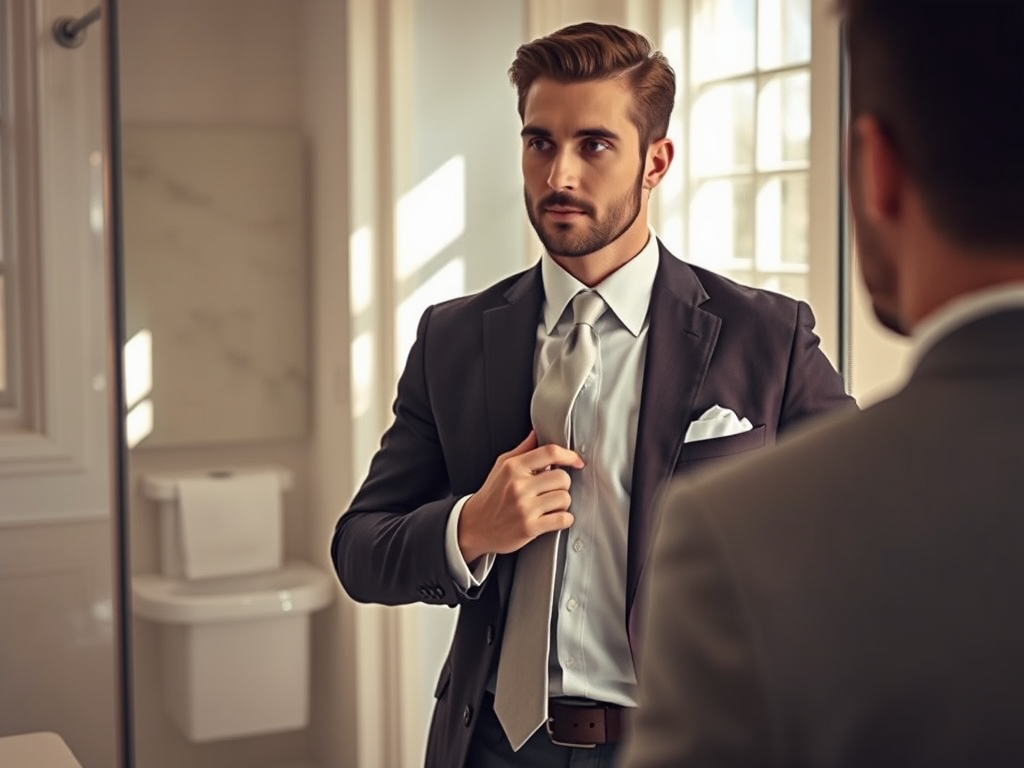When it comes to navigating the professional world, your attire serves as a powerful communication tool. Though your skills and qualifications are paramount, how you present yourself can build or break first impressions. A polished appearance conveys competence, confidence, and a commitment to your role and the organization. Understanding how to look professional involves more than just following a dress code; it is an art that combines personal style with situational awareness. Mastering this art not only enhances your outward appearance but also influences the way you feel about yourself. By focusing on key aspects such as fit, fabric, and grooming, you can elevate your professional image while remaining authentic to your personal taste.
Understanding Professional Attire

To project a professional image, understanding what constitutes professional attire is essential. There are different expectations based on industries, but several guidelines can serve as universal principles. Professional attire might range from formal business wear to smart casual outfits, depending on the workplace environment. However, certain essentials like tailored clothing, neutral colors, and quality fabrics are generally advisable. Investing time in understanding the nuances of professional dress may set you apart and create positive perceptions. Your clothing is often the first interaction potential clients or colleagues will have with you, so making it count is crucial.
Dress for Your Environment

Choosing the right attire begins with considering the culture of your workplace. Every industry has its norms; for instance, finance or law often demands formal business suits, while tech or creative fields may allow for more relaxed outfits. Assessing the culture of your organization is key in making your choices; this alignment helps you blend in seamlessly while also expressing your unique style. Additionally, it is vital to elevate your attire for client meetings or networking events. Researching the expectations for these occasions ensures that you make a phenomenal impression. Always err on the side of professionalism, but allow room for personal flair where appropriate.
- Formal: Traditional business suit, dress shirt, and polished shoes.
- Smart Casual: Blazer with tailored pants or dark jeans.
- Casual: Well-fitted clothes that look tidy but are comfortable.
Choosing the Right Fabrics and Fits
The texture and fit of your clothing greatly influence how you are perceived and how you feel. Quality materials like wool, cotton, and linen not only look better but also offer long-lasting durability. Wearing garments made from quality fabrics can also enhance your comfort throughout the day. Tailored clothing is vital for a professional look; when your clothes fit well, they enhance your silhouette and project confidence. Understanding your body shape and choosing styles that flatter it can significantly impact your self-image. When you look good, you feel good, and that positive energy is contagious.
| Fabric Type | Benefits | Best Uses |
|---|---|---|
| Wool | Durable, breathable, and retains shape well | Suit jackets, blazers |
| Cotton | Soft, comfortable, and easy to care for | Dress shirts, chinos |
| Linen | Lightweight and breathable, ideal for warm weather | Casual outfits, summer suits |
Accessorizing Appropriately
Accessories can dramatically influence the overall perception of your outfit. Strategic choices can either elevate your look or undermine it, so select wisely. Subtle yet sophisticated accessories, such as a classic watch or understated jewelry, are generally a safe bet. They provide a finished look without appearing overbearing. Footwear should also be carefully considered; well-maintained shoes that complement your outfit signal professionalism and attention to detail. A polished look involves consideration of every element you present, so choose accessories that harmonize with your overall attire.
- Classic watch for time management and sophistication.
- Minimalist earrings or a subtle necklace for understated elegance.
- Quality leather belt to pull your outfit together.
The Role of Grooming and Personal Hygiene
Achieving a professional look is not solely about clothing; personal grooming and hygiene play an equally crucial role. Regular haircuts, clean nails, and a well-maintained skincare routine contribute to an image of professionalism. When you take care of your grooming, it reflects your attention to detail and respect for yourself and others. Good personal hygiene, including fresh breath, is essential in even the smallest social interactions. Feeling good about your appearance can directly affect your confidence, impacting how you engage with colleagues and clients. Small gestures, like ensuring your clothing is lint-free and properly pressed, can make a significant difference.
Conclusion
Looking and feeling professional in your attire is achievable by understanding your environment, choosing the right fabrics, ensuring your clothing fits well, accessorizing thoughtfully, and maintaining good grooming habits. It is essential to remember that your appearance affects how others perceive you and influences your self-confidence. By focusing on these critical aspects of your wardrobe, you can foster a more professional image that resonates mutually with your skills and personality. Your clothes are more than just fabric; they can speak volumes about your professionalism and commitment. With these tips, you are now better equipped to present yourself professionally in any setting.
Frequently Asked Questions
- What should I wear to a corporate interview? Opt for a tailored suit in neutral colors, a crisp shirt, and polished shoes. Aim for a polished and professional look.
- Can I wear jeans to work? It depends on your workplace culture. If allowed, opt for dark, well-fitted jeans paired with a smart blazer.
- How do I know if my clothing fits properly? Clothing should fit comfortably without being too tight or too loose. Seek a professional tailor for assistance on proper sizing.
- Are accessories necessary for a professional look? While not mandatory, thoughtful accessories can enhance your outfit and convey professionalism.
- Can I wear bright colors to work? Yes, but use bright colors sparingly and balance them with neutral tones to maintain a professional appearance.
